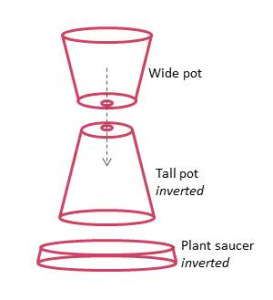How to Build a Garden Sink

You pull a carrot from your garden and take it to your kitchen for dinner. Before you can put it on your kid’s dinner plate, you have to wash it. A mess of black dirt spatters all over your kitchen counter, through your sink, and oozes down the drain. Perhaps this particular carrot had creases and crevasses, so you have to scrub. Even if you scrub it underwater in a basin, you still have plenty of water and a lot of garden soil to dispose of.
Time for a garden sink.
A garden sink is a very useful sink-type area that is located out in your garden. Water is supplied by a garden hose, and the “drain” dribbles back into your garden. A garden sink is a great place for scrubbing those carrots to kid-friendly standards. No water hauling with buckets. No dirt tracked into the kitchen. Clean carrots come indoors, and all the water gets recycled directly into your garden. Wow.
You can purchase a pre-formed plastic sink. My local garden chain has carried them in the past. Online suppliers offer many models to choose from (search Google images for “garden sink”). Depending on the model you select, you’ll probably get all the fittings and drain tubes with it in the box. You might even get a platform that holds the sink at “countertop” height. Simply connect a garden hose to the fitting that supplies the faucet, lay the drain tube into your garden, and you’re in business.
I didn’t want a big plastic form in my garden, so I made my own garden sink from a few ceramic flowerpots. I shopped the pretty enameled pots at my favorite garden store to find a wide pot which opened expansively enough that I felt comfortable moving my arms inside. This became my sink basin.
A matching tall pot became the base – sufficiently tall to raise my sink to useful height in the spot I had chosen for it. It helps if the bottom of your two pots is similar in diameter (doesn’t have to be exact). You should also look for flat-bottomed pots rather than the ones that are curved. Be sure that both of your pots have large predrilled holes; small won’t work very well.
Next I found a plain terracotta saucer that was a bit wider than the lip of the tall pot. I needed the saucer to stabilize the tower, because once you start running water, the area can get marshy.
Invert your saucer. Invert the tall pot and center it on the saucer. Balance your basin-pot on top. Line up the holes in your two pots.
For water supply, I hang a hose over the top edge of my basin, although some internet photos show beautiful faucets which would be mighty handy. For drainage, my garden sink seeps water slowly and gently into the garden in which it is standing. I plant higher water needs plants –like lettuces, parsley and green onions– around the base.
If you use your garden sink as I do — merely to clean up veggie harvests and to wash mud off your hands — the water draining from your sink is basically potable water with some garden soil and clean compost thrown in. You do not need to worry about whether this very-close-to-fresh water gets onto the leaves of your lettuce plants.
Now, why did I use a diagram as the image for this post, instead of a photo of my pretty garden sink? Because, after several years of happily using this garden sink, we tore it down and built a bigger new one (so I can’t take a new photo of the flowerpot sink, and I can’t find the old photo — don’t you hate when that happens?). More about garden sinks in a future post.

